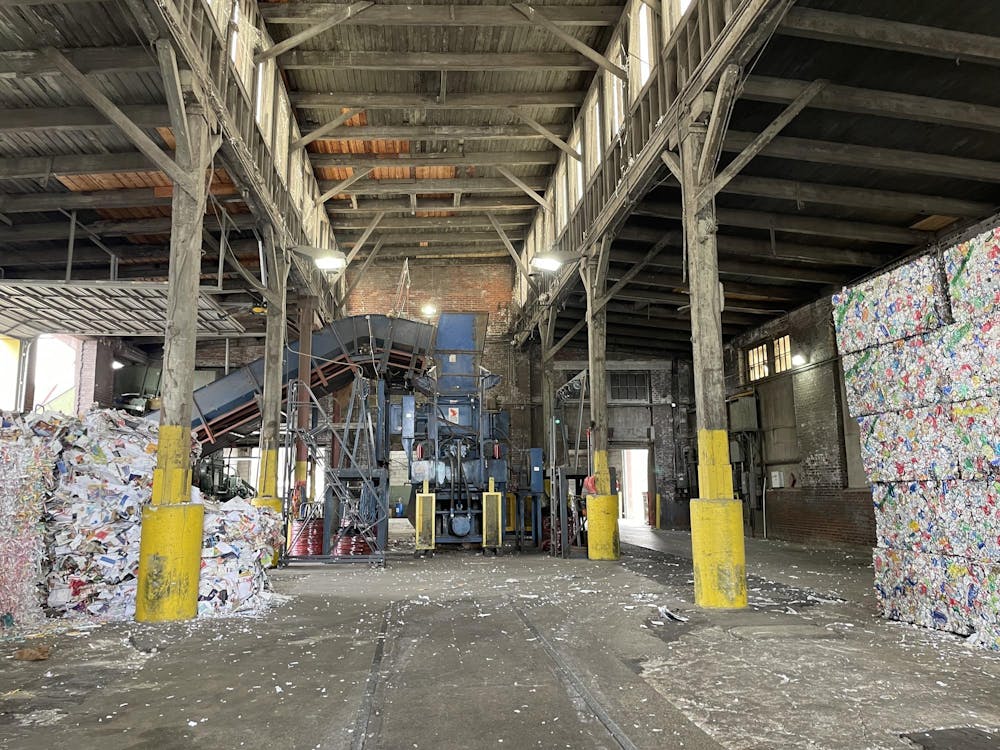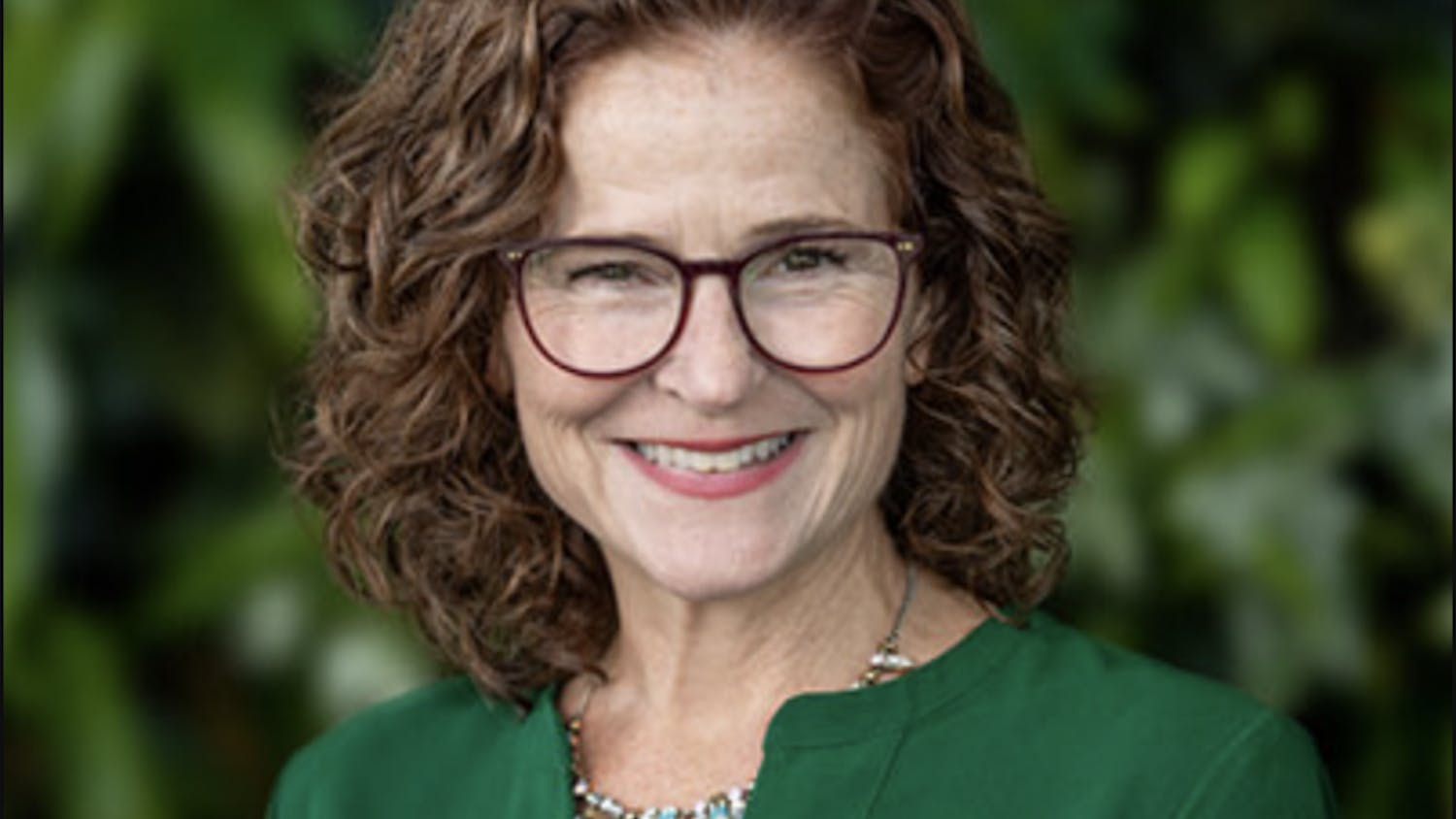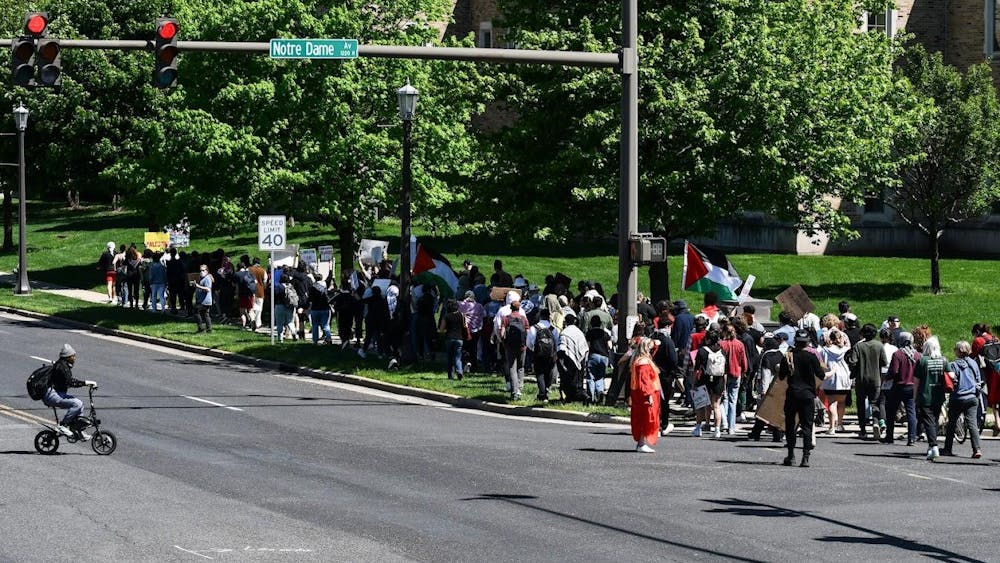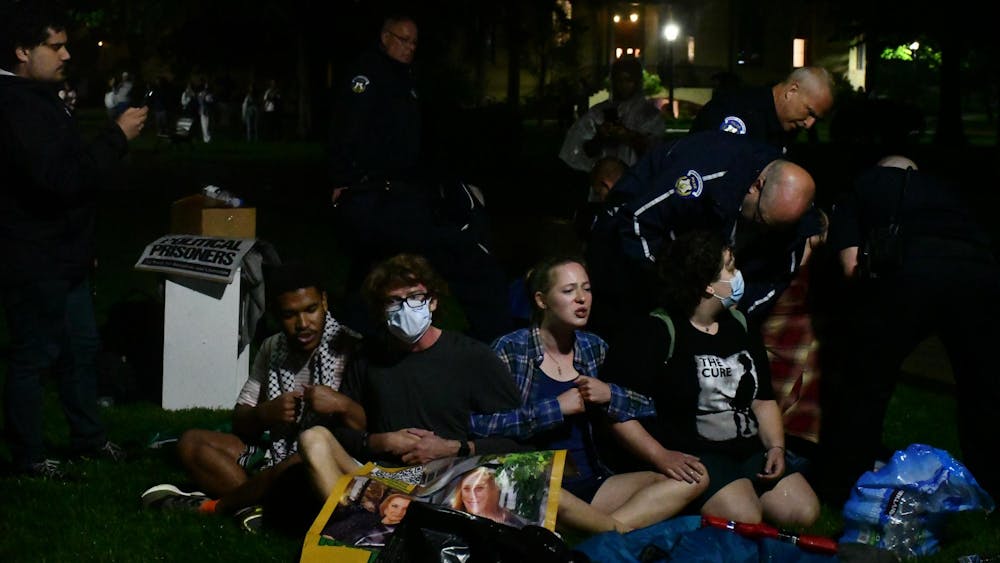In the past year, Notre Dame students may have noticed the introduction of blue recycling toters across campus. These bins are a part of a larger effort to renew recycling efforts on campus, Austin Poyar, sustainability program manager and Geory Kurtzhals, senior director of sustainability said.
Recycling on campus decreased a few years ago due to a change in recycling practices which no longer allowed for the collection of recyclable materials in plastic bags and the COVID-19 pandemic. Poyar and Kurtzhals explained the Notre Dame office of sustainability is now trying to “rebuild trust” in recycling and make it widespread across campus again.

This undertaking has been carried out on a building by building basis, Poyar said. So far 46 buildings now have recycling infrastructure, with 170 recycling toters spread out across campus. Rigid plastic, paper, metal and glass are collected in these toters, while cardboard is placed in separate containers. Roughly 4,000 pounds of recycling are collected every week from Notre Dame.
Kurtzhals explained the process of adding recycling infrastructure to all of campus takes time, as each building has its own unique needs.
“You can’t just change everything overnight,” Kurtzhals said.
Another element of the Office of Sustainability’s recycling initiative is to update signage in order to accurately convey what materials cannot be recycled. Contrary to what is commonly thought, paper napkins and containers with a lot of food on them cannot be recycled, Poyar said.
Kurtzhals noted the importance of spreading awareness about recycling at Notre Dame in order for change to actually come to fruition.
“We want the community to know about the positive progress we’re making and become a part of it,” Kurtzhals said.

Also central to making recycling a reality at Notre Dame are the custodians who gather the recycling and put the toters out to be collected. Kurtzhals described them as the “unsung heroes” of the recycling program.
Once the recycling is put outside of buildings in toters, it is collected by Recycling Works, an independent, for-profit recycling business located in Elkhart. Here, paper, cardboard, plastic, aluminum and steel are separated, bundled by category and then sold on the open market to businesses within the United States.
Daniel Zelaya, the plant manager at Recycling Works in Elkhart, said the facility receives over 400 tons of material per day and more than 800,000 tons per month. Recycling Works then sells roughly 250 tons of this material per month to buyers in the United States at $1500 per ton. The majority of this material is used to produce toilet paper and tissues.
This material begins its journey at the “tip floor” where the recycling, which comes from 14 counties in Michigan and Indiana, is dumped. Workers then push the material onto a conveyor belt.
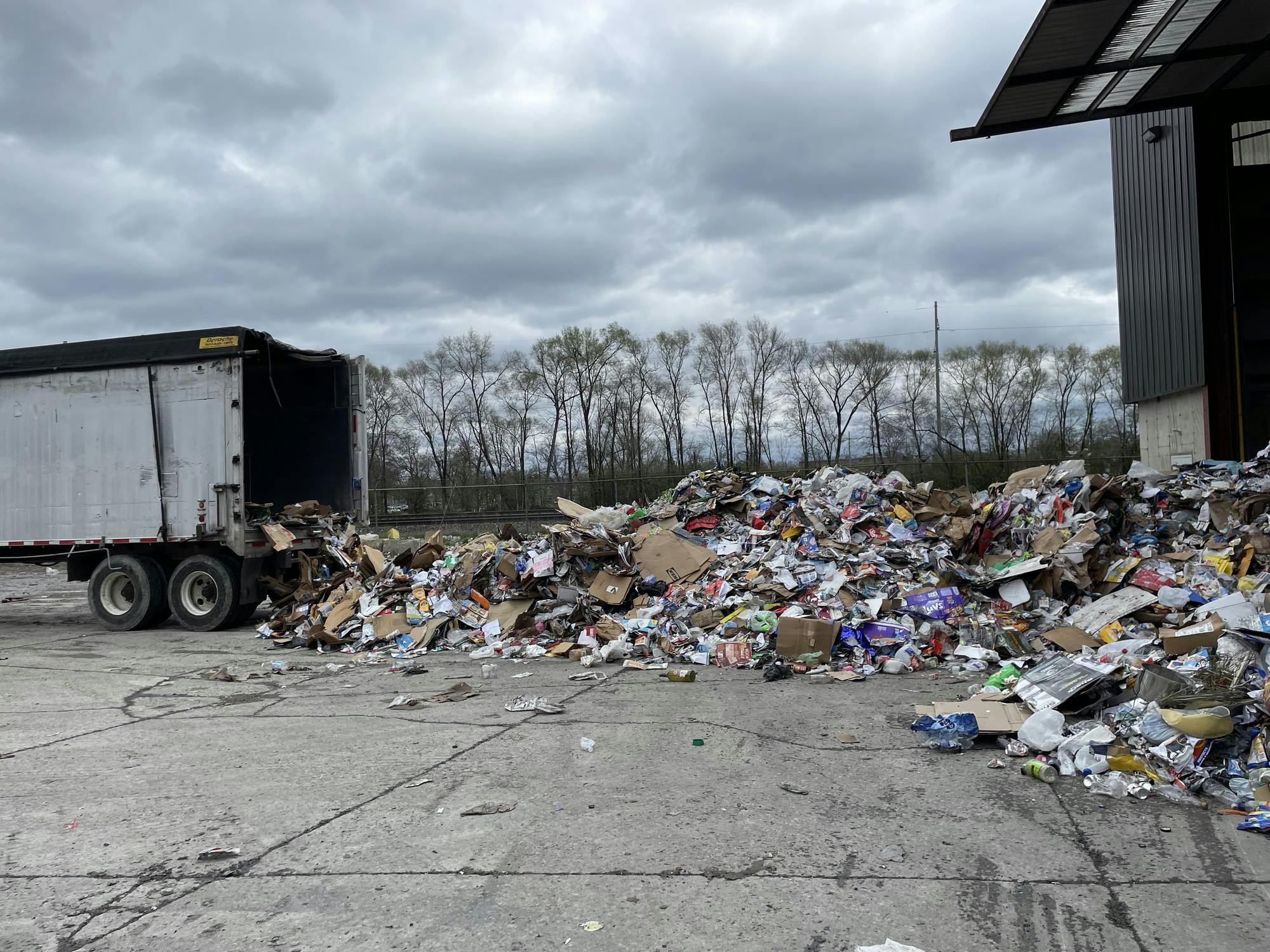
Following this, the presort step of the process begins, where workers manually remove non-recyclable materials such as plastic film, electronics and certain types of metal. The remaining material then goes through a machine which pushes lighter items, such as cardboard, to the top of the pile, where it can then be separated.
Zelaya said while his preference is always to hire people to sort the recycling, automated systems are becoming more efficient and necessary for the recycling process. Automated systems in the plant include a robotic arm which picks up pieces of plastic film, an optical sorter which separates different types of plastic based on their translucency and a magnet system which separates metals.
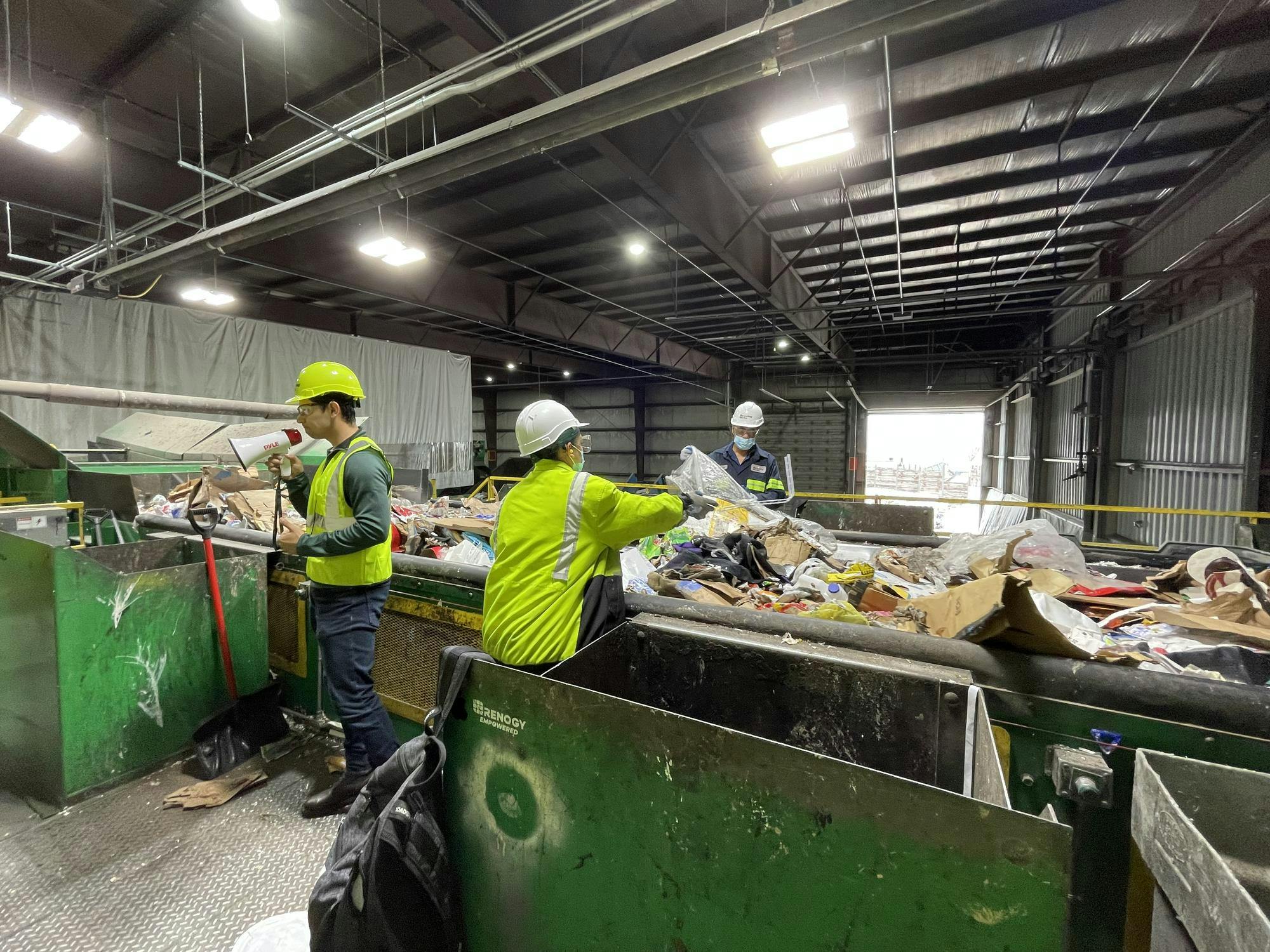
The final step of the process is for the separated material to go to the “post-industrial plant” where it is gathered and bundled to be sold. Zelaya pointed out that 500 acres of land per year in Indiana are used for landfill and stressed the importance of recycling in combating poor land use.
Kurtzhals emphasized the office of sustainability’s main priority is to get students to trust and participate in the recycling process.
“This is important work,” she said. “People need to trust that it’s actually going to be recycled.”


